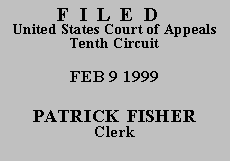

| UNITED STATES OF AMERICA,
v.
STEVEN J. WALKER |
No. 98-3147
(D.C. No. 97-CR-40067) |
At trial, police officer Matthew D. Sarna testified that Walker had fled the scene of an early morning police stop of a vehicle in a parking lot in Lawrence, Kansas. The vehicle's driver, whom Sarna identified as Walker, threw several grams of crack cocaine to the ground before his escape. Documentary evidence, including a traffic summons and vehicle registration, also linked Walker to the vehicle.(1) Walker challenges Sarna's testimony, contending that the prevailing conditions at the time of the vehicle stop, including the parking lot's poor lighting, impaired the officer's ability to identify the driver accurately. Asserting a claim of insufficient evidence, Walker argues that the prosecution failed to prove conclusively that he was the vehicle's driver.
"[I]n reviewing the sufficiency of the evidence to support a jury verdict, this court must review the record de novo and ask only whether, taking the evidence--both direct and circumstantial, together with the reasonable inferences to be drawn therefrom--in the light most favorable to the government, a reasonable jury could find the defendant guilty beyond a reasonable doubt." United States v. Voss, 82 F.3d 1521, 1524-25 (10th Cir. 1996) (quotation omitted). Furthermore, we will not second-guess a jury's reasonable determination of a witness's credibility. See United States v. Yoakam, 116 F.3d 1346, 1349 (10th Cir. 1997).
We conclude that there is sufficient evidence on the record to support the jury's verdict. Sarna's testimony showed he was familiar with Walker from several previous encounters, and that he had also previously seen Walker driving the vehicle in question. Furthermore, Sarna testified that he was approximately six feet from the person he identified as Walker. Sarna's partner that evening, Officer Richard Dale Nichols, testified that Sarna contemporaneously identified the fleeing driver as Walker. Moreover, the defense attempted to impeach Sarna's identification by questioning him about visibility at the scene of the stop and by showing that in his written report, Sarna had described the driver as heavier and taller than Walker. The trial judge properly instructed the jury to return a verdict of not guilty if, after considering all of the evidence and testimony, it had a reasonable doubt that Walker was not the vehicle's driver.
We conclude that given the evidence introduced at trial, a reasonable jury could have found the defendant guilty beyond a reasonable doubt.
AFFIRMED. The mandate shall issue forthwith.
ENTERED FOR THE COURT
Carlos F. Lucero
Circuit Judge
*.The case is unanimously ordered submitted without oral argument pursuant to Fed. R. App. P. 34(a)(2) and 10th Cir. R. 34.1(G). This order and judgment is not binding precedent, except under the doctrines of law of the case, res judicata, and collateral estoppel. The court generally disfavors the citation of orders and judgments; nevertheless, an order and judgment may be cited under the terms and conditions of 10th Cir. R. 36.3.
1.The traffic summons clearly linked appellant to the vehicle by listing appellant's birthdate, November 13, 1974. The car was registered to Barbara Walker (appellant's mother) and Steven Walker. Appellant's father, like appellant, is named Steven Walker.